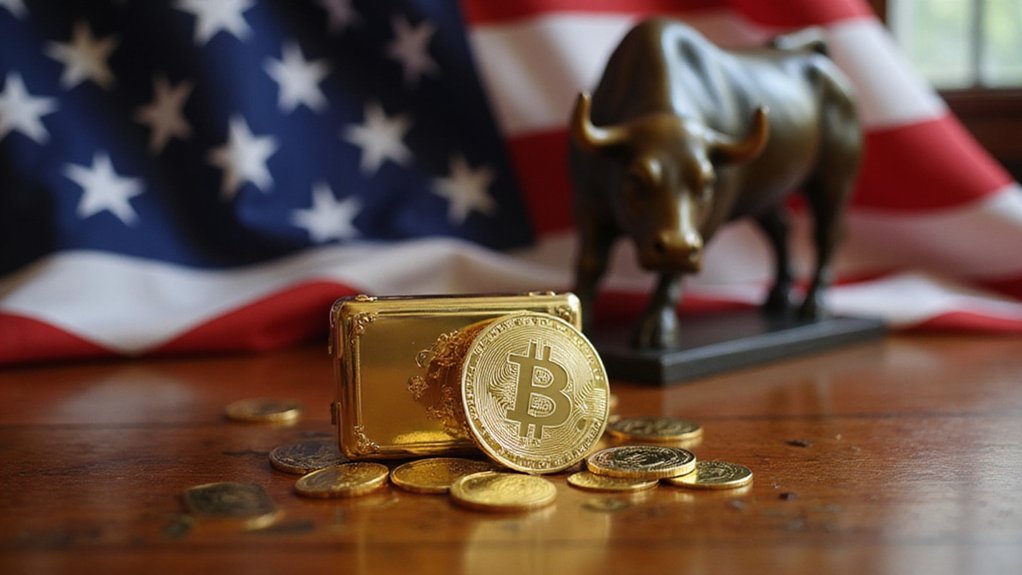A regulatory reckoning has arrived for the stablecoin industry, as the U.S. Senate‘s 68-30 passage of the GENIUS Act signals the end of the Wild West era for digital payment tokens. The legislation establishes a thorough federal framework targeting “payment stablecoins” and their issuers, creating what amounts to a regulatory gauntlet that could fundamentally reshape the industry’s largest player.
The Senate’s decisive 68-30 vote transforms stablecoins from regulatory Wild West tokens into federally supervised digital payment instruments.
Tether, commanding a staggering $156 billion market capitalization, now faces its most existential challenge since inception. The company—whose business model has thrived in regulatory gray areas—must navigate new requirements for “permitted payment stablecoin issuers” (PPSIs) that demand strict reserve asset backing, enhanced transparency, and dual-level supervision.
For an entity that has historically operated with opacity regarding its reserve composition, these mandates represent a seismic shift. The GENIUS Act’s provisions strike at Tether‘s operational core. Reserve requirements ensuring real asset backing could force significant adjustments to current holdings, while mandatory licensing standards and federal oversight threaten to expose practices previously shielded from scrutiny.
The legislation’s insistence on comparable regulations for foreign issuers operating domestically adds another compliance layer that could substantially increase operational costs. What makes this particularly precarious for Tether is the bipartisan nature of the legislation’s support, suggesting sustained political momentum rather than partisan posturing.
The framework attempts to balance innovation with consumer protection—a noble goal that nonetheless creates regulatory uncertainty capable of undermining market confidence and liquidity in the short term. Other stablecoin issuers face similar challenges, but Tether’s dominance makes it the most visible target.
The company’s ability to maintain its market position depends entirely on successfully adapting to licensing requirements and enhanced scrutiny—a transformation that could prove as difficult as turning an aircraft carrier in a bathtub. The Comptroller’s exclusive regulation of Federal qualified nonbank payment stablecoin issuers establishes a single point of oversight that could streamline or complicate compliance depending on implementation. While stablecoins operate in digital form, they must still comply with traditional securities laws that govern financial instruments in many jurisdictions. Users experiencing difficulty accessing information about these developments can visit the company’s main website or hit back button to return to previous pages for additional resources.
The GENIUS Act now enters reconciliation with the House’s STABLE Act, creating additional uncertainty about final provisions. However, the Senate’s decisive vote indicates that thorough stablecoin regulation is inevitable rather than aspirational. For Tether, the question isn’t whether change is coming—it’s whether the company can survive the transformation intact.








